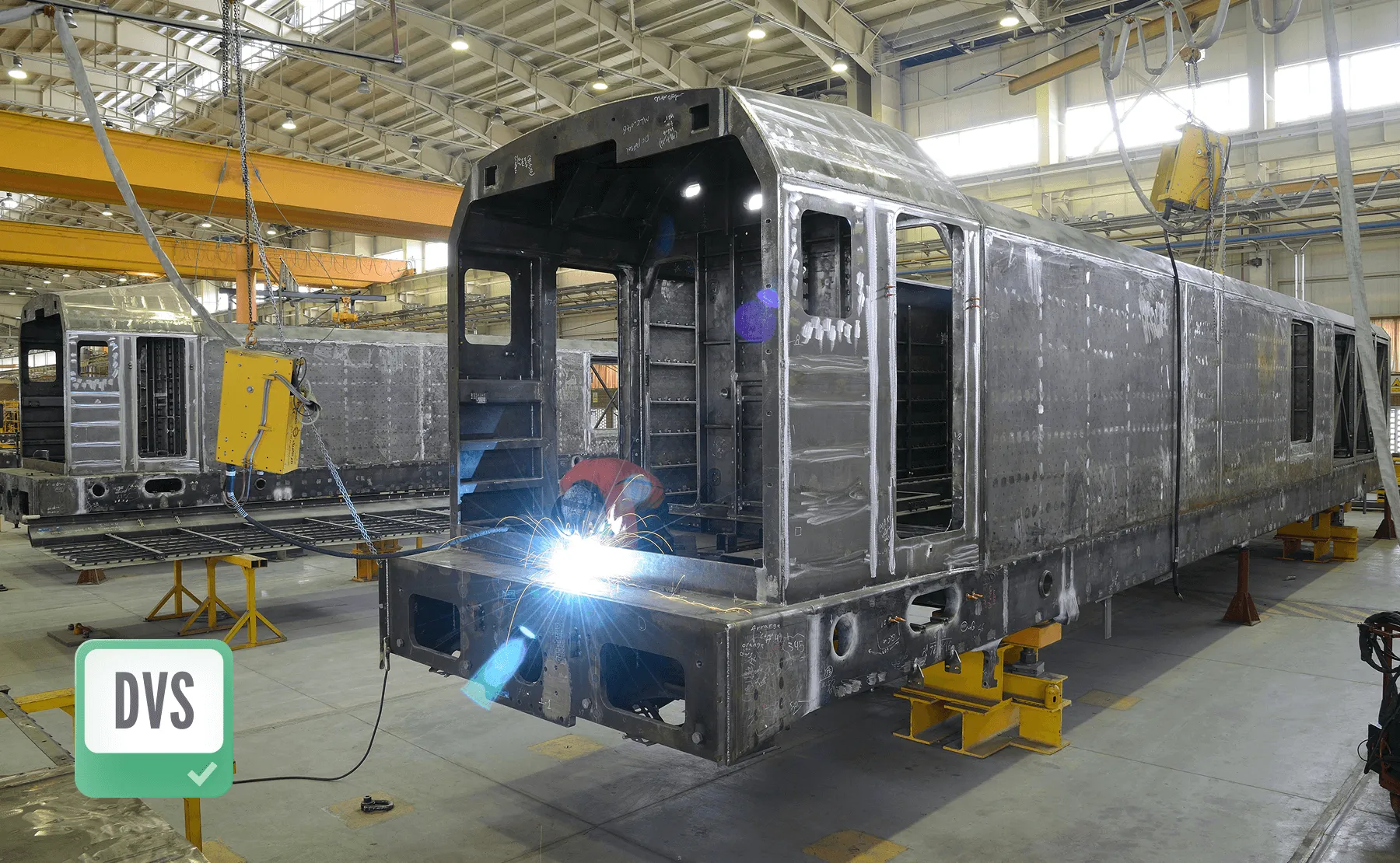Generate standard-compliant reports with full result tables, plots, and applied safety margins.
Automated support for DVS 1608 (aluminum fatigue) and DVS 1612 (steel fatigue + static stress).
Run accurate fatigue checks specifically for welded joints in railway structures and related applications.
Reflect load spectrums, plate thicknesses, and joint types directly within your FE model.
Perform DVS checks inside Ansys Mechanical, Femap, or Simcenter 3D without rebuilding the model.
Automate all fatigue class assignments, safety factors, and verification steps.

DVS 1608 (June 2010) Covers design and fatigue strength assessment of welded aluminum structures, specifically in railway applications. Focuses on fatigue-critical joints under real service load conditions.
DVS 1612 (August 2014) Applies to steel arc-welded joints used in rail vehicle construction. Includes rules for fatigue and static stress checks. Valid for welded structures with plate thickness >2 mm (or >1.5 mm in specific cases).
Standard Scope
ABS Standards
AIJ Standards
AISC Standards
API Standards
ASME Standards
Australian Standards
British Standards
Bureau Veritas Standards
DIN Standards
DNV Standards
DVS Standards
EN 13001 Standard
Eurocode 3
Eurocode 9
F.E.M. 1.001
FKM Standard
IACS Standards
ISO
Lloyd’s Register (LR) Standards
NORSOK Standards
VDI Standards
We support DVS 1608 (Aluminium Fatigue Check) and DVS 1612 (Steel Fatigue and Static Stress Check).
Yes. Use DVS 1608 for aluminium alloys and DVS 1612 for steel components in rail applications.
No. SDC Verifier works directly with your existing model in Ansys, Femap, or Simcenter 3D—no remeshing or rework required.
Yes. Reports follow the logic of each standard and include all calculated values, plots, and tables, ready for documentation.